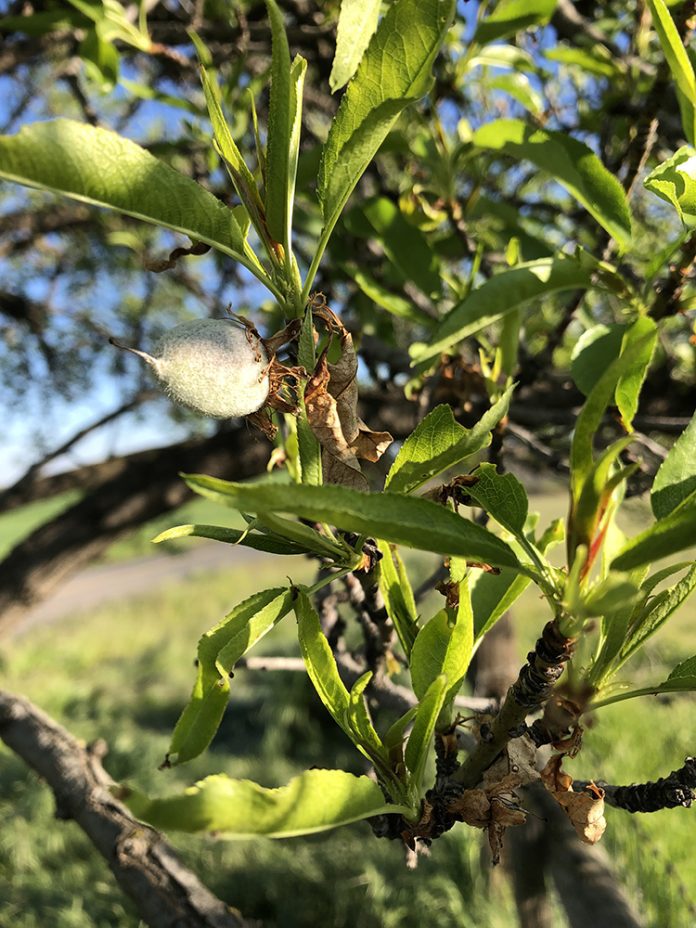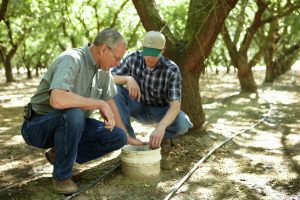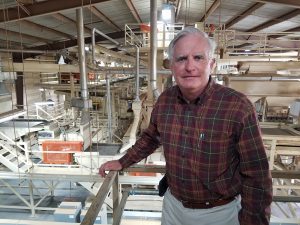
What is ‘yield prediction’ and will it help with managing crop inputs?
“If you have a good estimation of yield then you can use the information to manage nitrogen applications based on different needs,” Alireza Pourreza, associate professor and director of the Digital Agriculture Lab at UC Davis, said. “You can also use the information for irrigation rates.
“Yield forecasting is the first step in sustainability,” he added.
The almond industry, known for its sustainability goals and stewardship programs, has funded yield prediction research conducted by Patrick H. Brown and other researchers at UC Davis. The Jin Lab, under direction of Yufang Jin, has been developing scalable machine learning models to predict almond yield from individual tree, to cultivar, to block level early in the growing season with adjustments made mid-season.
Nitrogen use at the sub-block level is just one objective of the yield prediction research. To accurately predict seasonal nitrogen demand, growers need to estimate block level almond yield early in the season so that decisions on nitrogen applications can be made. Brown said the second is to understand variability in yield across an orchard. Identifying high-, medium- and-low production trees or areas in an orchard will help growers manage adaptively to achieve optimum yields. The third objective is to assist the industry for tool development by providing ground truthing and yield performance data.
Growers have been using the previous crop yield record to know how much nitrogen and other nutrients were removed at harvest. Those figures are used to plan fertilizer budgets for the next year and to comply with state regulations regarding groundwater. Pourreza, who is also founder of Korbin Data Analytics, said yield prediction is much more complicated than previous crop and nitrogen use. Yield prediction relies on different data and depends on many factors. The main indicator, he said, is light interception.
Photosynthesis is limited by light, he explained, and most trees never receive the maximum amount to reach their yield potential. Other factors include bloom intensity, flower numbers, canopy size and environmental factors of temperatures, soil health and management practices. Potential and historic yield are also included in the equation.
Assimilating all that data, Pourreza said, can provide a more accurate prediction of yield.

Research Identifies Key Determinants
Brown and Jin’s research on yield prediction began with collecting historical yield records of 185 Central Valley almond orchards dating back to 2005. A set of variables, including weather and orchard characteristics from remote sensing imagery were used as predictors. Results showed the predicted orchard level yield agreed with independent yield records. The research also identified several key determinants of yield based on modeling results. Almond yield increased dramatically with orchard age until about seven years in general. Higher long-term mean maximum temperature during the April-June timeframe enhanced yield in southern region orchards while higher rainfall in March reduced yield, particularly in northern region orchards.
Remote sensing metrics including maximum vegetation index were also identified as dominant variables for predicting yield potential. Brown said the next steps will be developing methodology for mapping at the sub-block level. In a recent article published in Frontiers in Plant Science by a research team that included Brown and Jin, it was noted that individual tree level yield estimation is critical for precision on-farm management and for improving understanding of yield variability with an orchard. Their research also notes that coupling high-resolution imagery and modeling opens the way for future innovation in precision orchard management.
A deep learning model estimating almond yield was developed and evaluated by taking advantage of unique tree yield data and super high resolution of multispectral aerial imagery in 2021 over a single cultivar almond orchard in the Central Valley. A five-fold cross validation showed the model with special attention module, driven by 4-band block imagery of 21 by 21 pixels, captured 96% of tree-to-tree variation within the study almond orchard. They reported almond yield for all individual trees predicted by the model also captured the spatial patterns and variability of almond yield from row to row and from tree to tree both within a row and along a transect perpendicular to the row orientation.
They concluded the research demonstrated the potential of applying deep learning technology to integrate high-resolution multispectral aerial images for accurate and robust tree level yield estimation. The approach fills an important gap in tree level yield estimation critical for site-specific orchard resource management, ultimately contributing to sustainability.
From the handler perspective, there is also value.

“For the right audience, this tool would be very valuable,” almond grower and handler Dave Phippen said.
There are growers who would embrace this technology, and it may give new growers insight into production, he noted.
The value for a grower would be better informed management of crop inputs, particularly nitrogen as growers need to comply with regulations aimed at preventing groundwater contamination.
Phippen said he believes there would be considerable interest in yield forecasting that would give growers new guidelines for nitrogen applications.
Having early indicators of crop N needs would allow time for budgeting applications, he said.
Just weeks after bloom ended, there is still a long way to go before determining what is going to stick. Trees will still be shedding nutlets in April, Phippen said, but you don’t want to give them a reason to shed, and that is what a lack of fertility can do.
Mike Kelley, manager at Central California Almond Growers Association, said the estimation could also give processors an idea of how long the season would run. They could also budget for labor and even the amount of plastic needed for stockpiles.
The statistics service forecast that comes out in the summer can be close to actual yield in most years, but is too late for budgeting purposes, Kelley said.

Cecilia Parsons | Associate Editor
Cecilia Parsons has lived in the Central Valley community of Ducor since 1976, covering agriculture for numerous agricultural publications over the years. She has found and nurtured many wonderful and helpful contacts in the ag community, including the UCCE advisors, allowing for news coverage that focuses on the basics of food production.
She is always on the search for new ag topics that can help growers and processors in the San Joaquin Valley improve their bottom line.
In her free time, Cecilia rides her horse, Holly in ranch versatility shows and raises registered Shetland sheep which she exhibits at county and state fairs during the summer.















